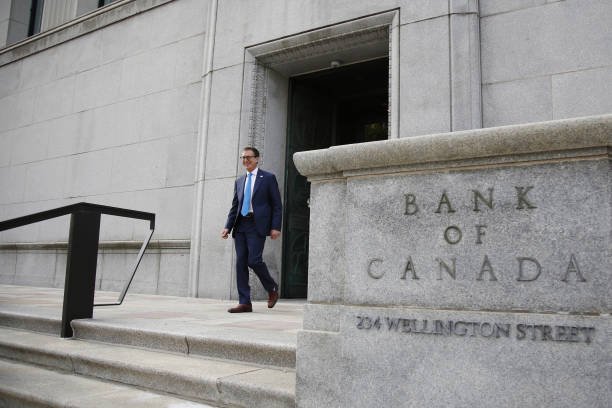The Bank of Canada lowered its benchmark overnight interest rate by 25 basis points to 2.50%, the first cut since March, citing signs of economic damage, especially from U.S. tariffs.
BoC Governor Tiff Macklem said that “with a weaker economy and less upside risk to inflation, the governing council judged that a reduction in the policy rate was appropriate to better balance the risks going forward.”
Officials noted that the labor market has softened, with more than 106,000 jobs lost in July and August, largely in trade-sensitive sectors, and unemployment rising to 7.1%, while hiring elsewhere in the economy has also cooled.
Also Read:
Exports and business investment were cited as notable weak spots, while consumption and the housing sector showed healthier growth—but not enough to offset broader economic contraction.
Inflation measured by headline CPI remains relatively moderate, while core inflation gauges, such as the trim and median measures, have eased, though still near 3% annually.
The Bank said that broader underlying inflation pressures are closer to 2.5%, and wage pressures are continuing to ease.
The removal of some retaliatory tariffs on U.S. goods eliminated one inflationary pressure, while the disruptive effects of trade shifts remain.
Macklem noted that “tariffs are having a profound effect on several key sectors, including the auto, steel and aluminum sector.”
While the rate cut restarts monetary easing, the Bank of Canada removed earlier references to a “possible need for further cuts” and offered little in the way of firm forward guidance.
The statement emphasized that policymakers will be “proceeding carefully,” noting that shifts in trade continue to add costs even as they weigh on economic activity.
Macklem said that there has been some recent stability in U.S. tariffs, which may reduce near-term uncertainty, although renegotiation of trade agreements between the U.S., Canada, and Mexico is becoming an increasing focus.
Officials are closely watching how disruptions from tariffs and supply-chain changes will affect investment, employment, household spending, and inflation expectations.
The Bank’s deposit rate is set at 2.45%, still slightly below the policy (overnight) rate, which leaves a narrow band for policy implementation.
Canada’s GDP shrank at a 1.6% annualized pace in the second quarter, largely due to export and business investment declines, reinforcing the urgency behind the rate cut.
Although household consumption and housing continue to grow, weak population growth and labor market softness are seen as constraints on future spending.
Outlook
The overall picture suggests the BoC has restarted monetary easing but is wary of overextending, given inflation threats tied to global protectionism and trade volatility.
Key questions now are how much more the Bank will cut rates and how external risks like tariffs, trade policy, and global demand will evolve.
If inflation continues to cool and trade uncertainty recedes, further rate reductions may follow; if not, the Bank may pause or even reverse course






















